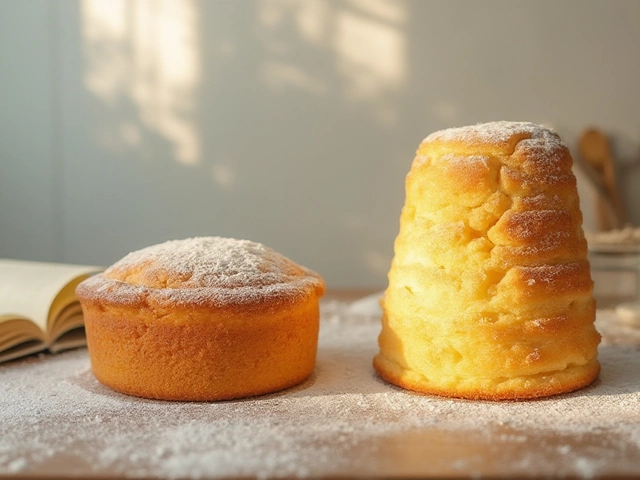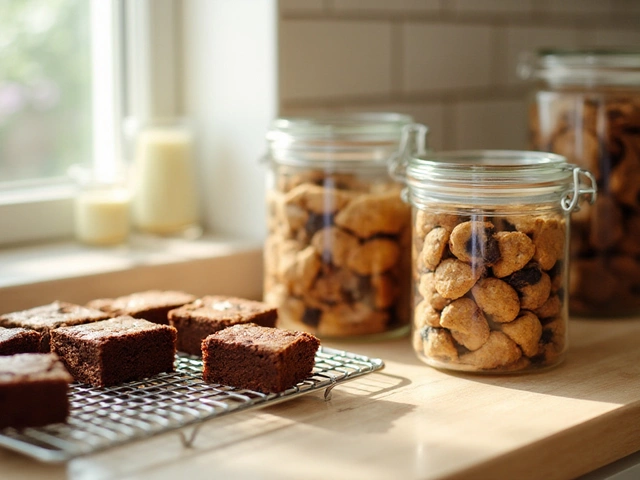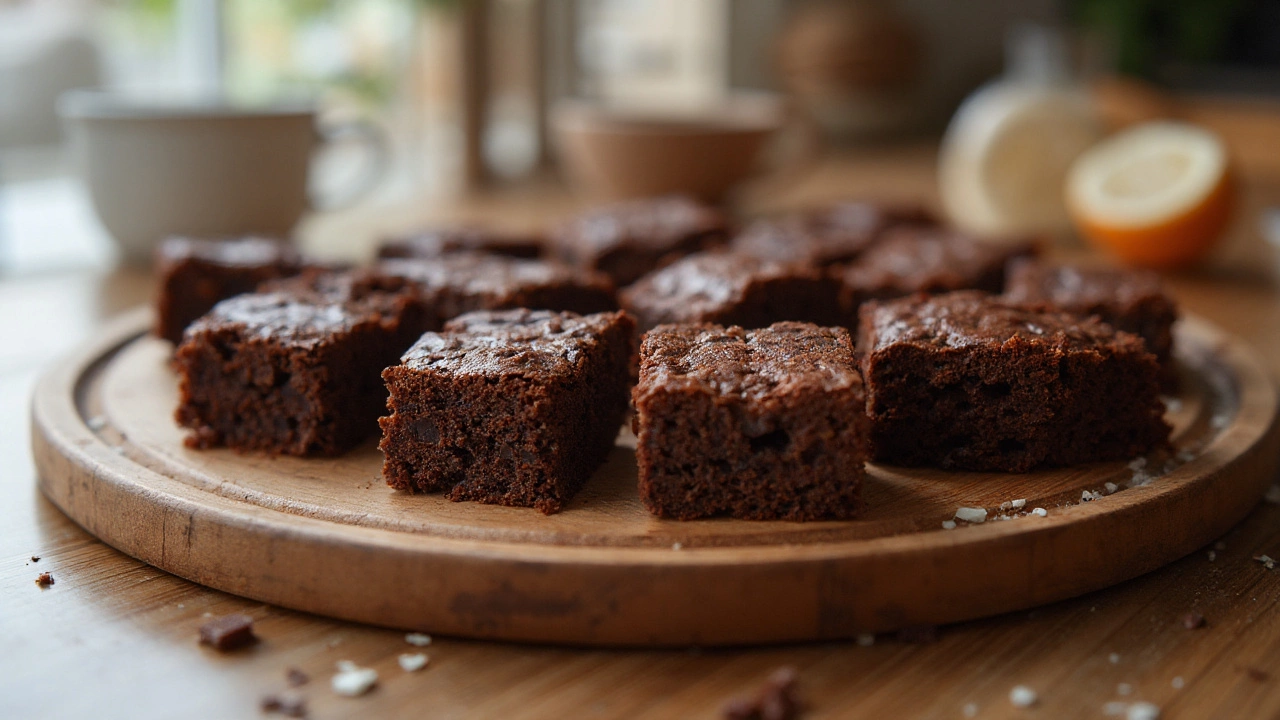
Ever gone to sneak a late-night brownie and paused mid-bite, staring at the edge because something… felt off? It happens more than you’d think. Brownies seem pretty sturdy—dense, fudgy, sometimes a little sticky—but they’ll quietly go from delicious treat to "uh oh, maybe don’t eat that" if you’re not paying attention. Besides, nobody wants to waste a pan of brownies, but a bad bite can absolutely ruin your night (or your stomach). So, how can you tell when brownies are past their prime?
Visual and Smell Clues: What Rotten Brownies Look (and Smell) Like
If you’re suspicious, let your senses do the heavy lifting. The very first giveaway is usually mold. Brownies might seem tough, but they’re not invincible, especially in humid places or if you’ve stored them in a sealed container for days. You’ll sometimes see fuzzy white, blue-green, or grayish specs creeping along the edges or surface. If it looks like your brownies are growing their own fur coat, it’s time to let them go. Even a tiny patch of mold means the whole batch is done—mold roots go deep, and you definitely don’t want those in your system.
Next, check the color. Brownies that have gone bad sometimes develop a weird, pale, or uneven color, especially around the edges where moisture can pool. They might even get a slimy or shiny film, particularly on top or in cracks. If you see shiny spots that look unfamiliar, or places that look drier and lighter than the rest, be cautious. No one wants to make "mystery film" brownies a thing.
Smell is another no-fail test. Good brownies smell chocolatey, buttery, inviting. If you catch a whiff of sourness, musk, or a "wet cardboard" odor, trust your nose. You shouldn’t hesitate—bad smells rarely lie. In fact, scientists have identified that certain molds release microbial volatile organic compounds (MVOCs) as warning signs. So if you get a whiff reminiscent of compost or musty towels, that’s your body’s way of saying step back.
To make your detective work easier, here’s a handy cheat sheet of what to look for:
| Sign | What It Means | Should I Eat It? |
|---|---|---|
| Mold or Fuzzy Spots | Mold growing on surface or edges | No, throw all brownies out |
| Odd Film, Shiny/Sticky Patches | Possible bacteria growth or sugar breakdown | Better not to risk it |
| Discoloration | Paler or uneven coloring, especially moist spots | Avoid eating |
| Strange Smell | Sour, musty, or "off" odors | Definitely skip |
| Hard as a Brick | Dried out, rock-solid texture | Not harmful, just gross |
Not all changes mean spoilage. Sometimes, brownies just dry out and turn hard, especially at room temperature. That’s not unsafe, but it certainly won’t be the chewy joy you were hoping for.
You might be wondering, "What about if I only see a tiny spot and can cut it off?" In baked goods, the answer is always no—the fuzzy parts are just the tip of the iceberg. Even tiny colonies send microscopic threads (hyphae) deep inside, where you can’t see them. Unlike cheese or firm veggies, you can’t just slice off the bad and enjoy the rest.
If you see nothing weird and the brownies smell like chocolate heaven, you’re probably still good. Try a tiny piece to check the taste if you’re really unsure. Your tongue is better at picking up bitterness or sourness than you think. If it tastes funky, spit it out—no guilt, just self-preservation!
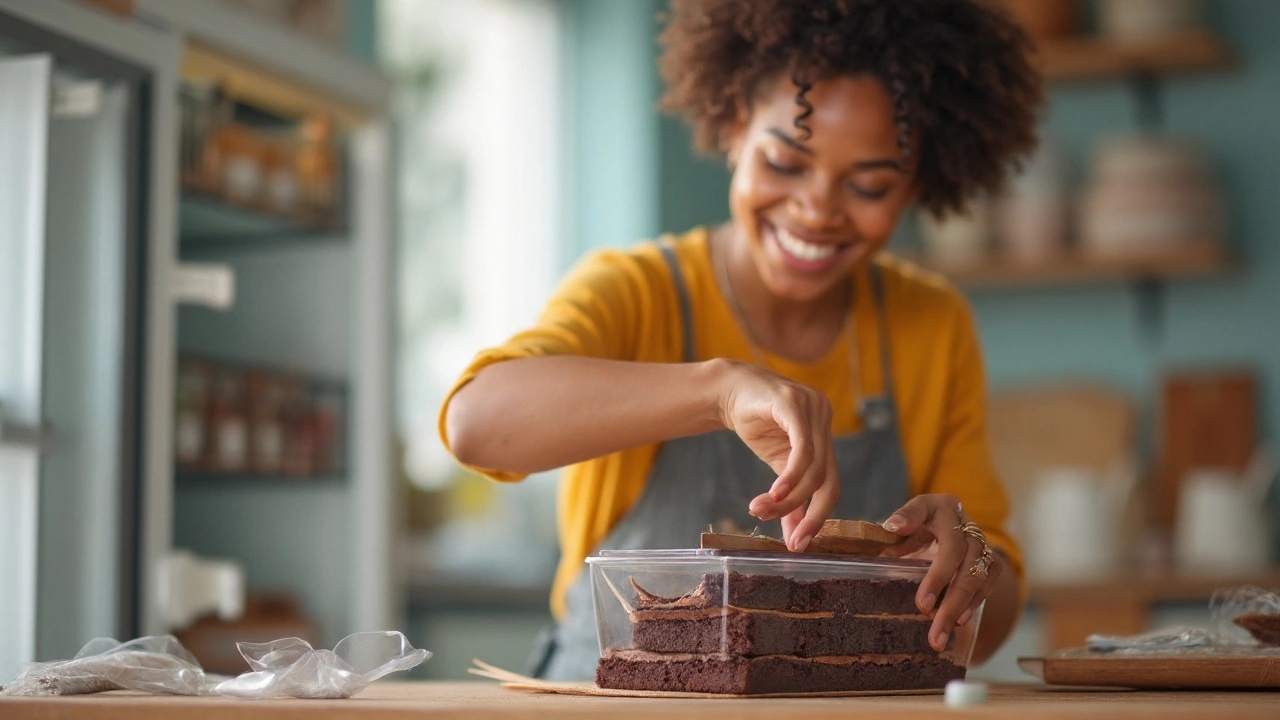
The Science of Brownie Spoiling: Why and How Brownies Go Bad
You’d think high sugar makes brownies immune to spoiling, right? Not really. Sugar is a preservative but not a miracle worker. Most regular brownies, the kind you bake at home or buy in a bakery, contain eggs, butter, and milk or cream. These ingredients are like an open invitation for bacteria, yeast, and mold. Here’s what actually happens behind the scenes:
Fresh brownies start with water content from those eggs and butter. Once they’re out of the oven and exposed to air, some of that moisture evaporates, but not all of it. Over time, the leftover water gets cozy with sugar and natural proteins. If your storage container isn’t airtight, moisture in the air can seep in, especially in the summer or if you live somewhere humid (hello, Florida!). Bacteria and mold love this environment—they munch on sugar and proteins, breaking them down and making your brownies taste and smell off.
Temperature is another major player. Keeping brownies at room temp (around 68-72°F or 20-22°C) is safe for a couple of days, but live somewhere warmer and you’re speeding up the growth of things you don’t want to eat. If you leave brownies out uncovered, they’ll get hard and stale quickly because of moisture loss. But seal them tightly and forget them for a week? The lack of airflow can actually speed up microbial growth if some stray spores get inside.
What about preservatives? Store-bought brownies sometimes last a week or even two unopened because of chemical stabilizers. Homemade brownies? No such luck. The clock starts ticking as soon as you slice into the pan. Here’s a quick look at how the storage method and your kitchen’s climate affect brownie shelf life:
| Storage Method | Typical Shelf Life | Risks |
|---|---|---|
| Room Temperature (Airtight Container) | 2-4 days | Mold, staleness, dry edges |
| Refrigerator | Up to 1 week | Drying out, fridge smells |
| Freezer | 2-3 months | Freezer burn, texture changes |
| Uncovered on Counter | 1-2 days | Dries out, hardens fast |
Humidity is a silent villain, too. A 2023 study from the University of Wisconsin found that food stored in kitchens with over 60% humidity developed mold 34% faster than in drier environments. So the time of year (sticky summers) and your local weather matter more than you’d guess.
Recipe type also matters. Fudgy brownies with lots of eggs or milk spoil the quickest, while vegan brownies made with oil, cocoa, and no dairy last a bit longer—but not forever. Frostings, nuts, or cream cheese add-ins introduce even more moisture and spoil risk. Think about that next time you go wild with toppings!
Finally, don’t forget cross-contamination. If you stick a dirty knife back into the pan, or touch the brownies with hands that handled raw meat or eggs, you’re giving bacteria a freeway right into your treat. Even my cat Whiskers knows better—he’s not allowed anywhere near the brownies (although, to be honest, he’d rather chase the box).
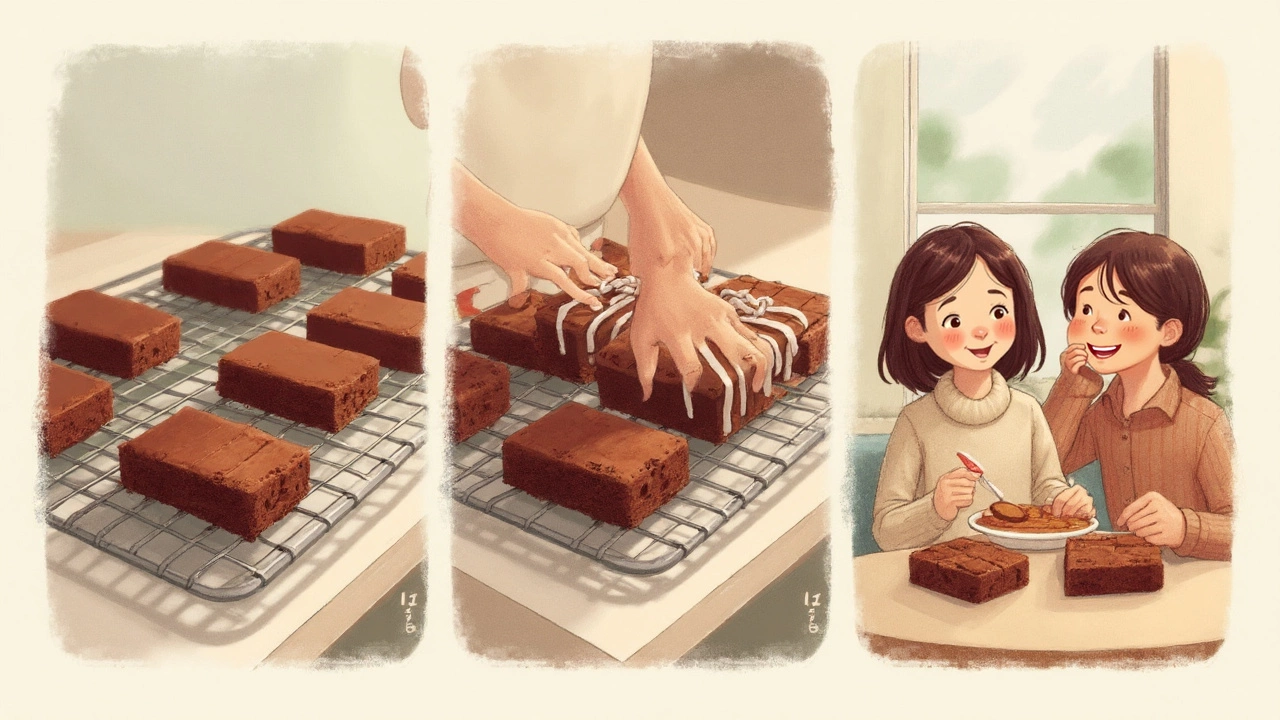
How to Keep Brownies Fresher (and Tastier) for Longer
Okay, so you’ve got your brownies, and you want to keep them perfect as long as possible. Here are some tricks I swear by to get the most shelf life (and tastiness) from every batch.
First, the storage container matters way more than you think. Use a true airtight container—one designed for food, not just any plastic tub with a lid. Air is the enemy of both freshness and food safety. Wrap brownies in parchment paper or plastic wrap before sealing to keep them from sticking together and to add an extra layer of protection from air and moisture.
If you’ll finish the brownies within a few days, room temperature is perfectly fine (unless it’s over 80°F in your house, then prioritize the fridge). The moment you start seeing summer heat or super humidity, pop them in the fridge, but remember they’ll dry out faster. The trick: add a slice of bread or a marshmallow to the container—the brownies will suck up the moisture from those instead of drying out. This works for cookies, too!
Freezing is the best long-haul trick. Cut brownies into squares, wrap them individually in cling wrap, then pile them in a zip-top freezer bag or airtight container. Defrost at room temp or zap in the microwave for a warm gooey treat anywhere, anytime. They taste freshly baked if you do it right. Just don’t stick the whole pan in the freezer unwrapped—the edges get icy and the middle gets soggy once thawed.
Another tip: if you know you won’t eat all the brownies soon, leave part of the batch unsliced and store it as one block. Less surface area means less chance for air and bacteria to sneak in (and fewer edges to dry out). Slice only what you’re ready to eat.
Here’s a quick checklist for peak brownie storage:
- Let brownies cool completely before storing.
- Always use clean utensils for slicing or serving.
- Wrap tightly in plastic or parchment for the fridge or freezer.
- Label containers with the date so you don’t rely on memory alone.
- If you spot mold or weird smells, be ruthless—toss the whole batch.
What about "pantry hacks" to make brownies last longer, like adding vinegar or lemon juice? That’s more helpful for bread than brownies—an acid can slow mold in some baked goods, but it’ll ruin the flavor and texture here, so just don’t.
And if you share your kitchen with pets, keep brownies far out of reach. Chocolate is dangerous for cats and dogs (even Whiskers knows better), and a sneaky bite can do some serious damage. Always keep them in a container and out of paws’ way.
It’s tempting to hope for the best ("they look okay, must be fine!") but a quick check with your senses is worth it every time. Brownies tend to spoil quietly, so it’s better to act on the safe side. Spare yourself the drama of a bad stomach—and keep your treat-loving heart (and belly) happy.
Remember, fresh brownies are worth protecting. Next time you stare down a pan of sweets, you’ll know exactly what to do—and when to say goodbye.



